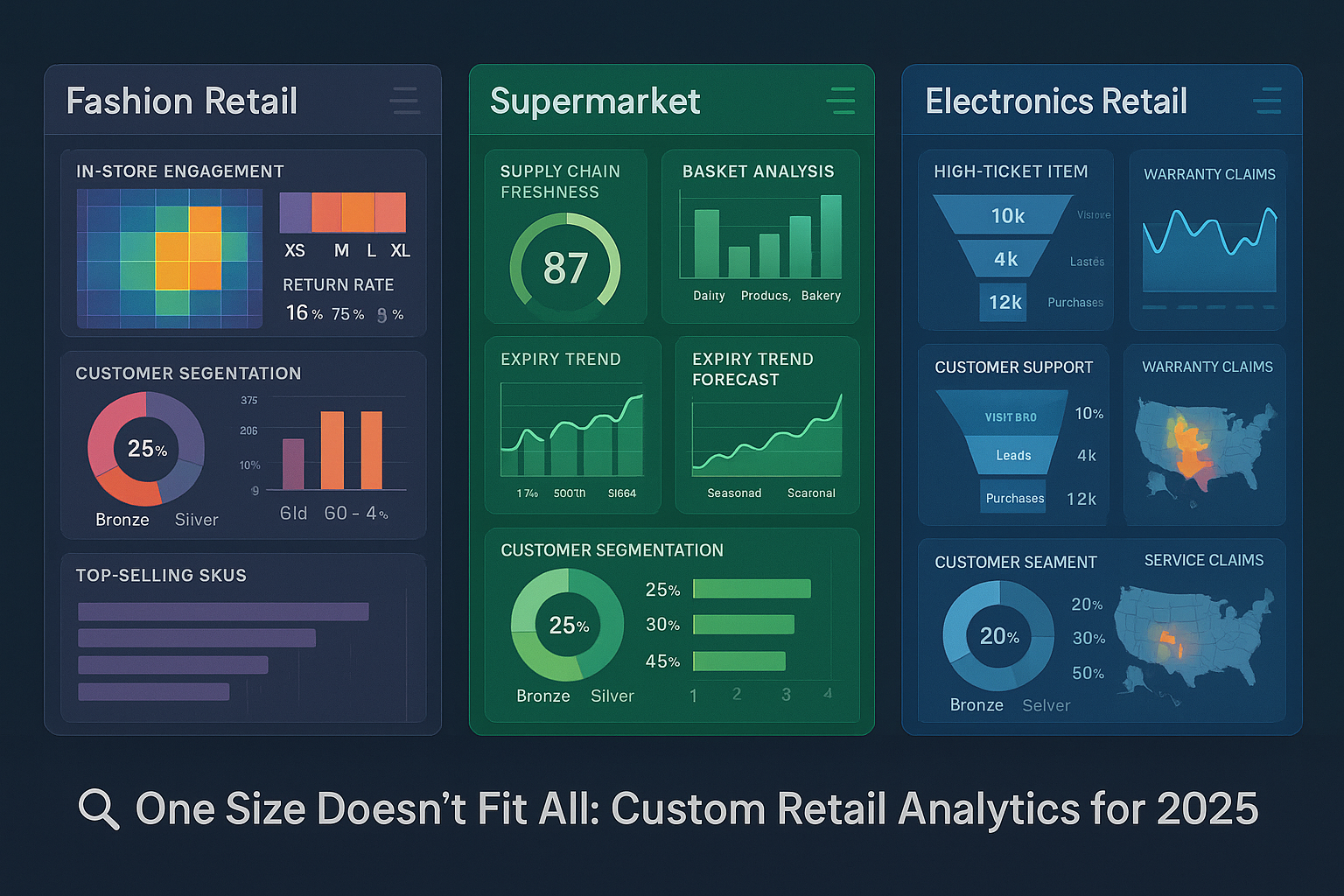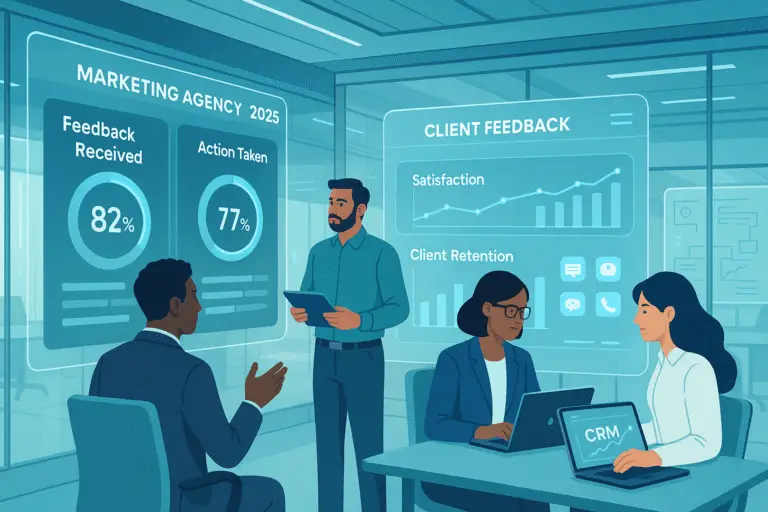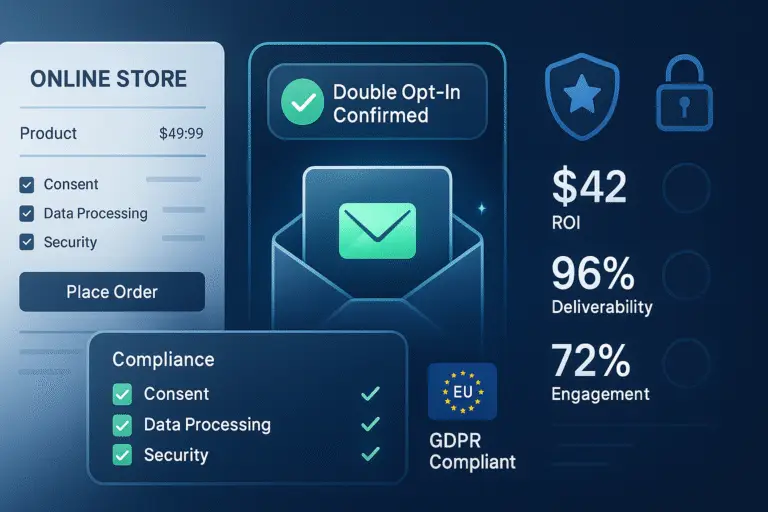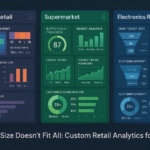The retail analytics software 2025 landscape is rapidly shifting toward specialized solutions that address unique industry challenges rather than one-size-fits-all approaches. As retailers face increasingly complex consumer behaviors and competitive pressures, predictive analytics software tailored to specific retail segments provides crucial competitive advantages.
What You’ll Learn:
- How industry-specific customization transforms retail analytics effectiveness
- Why generic business analytics for retail often fall short of meeting specialized needs
- Top niche analytics tools that provide targeted insights for different retail sectors
- Practical approaches to analyze retail sales data using specialized solutions
- How ecommerce data analytics software is evolving to meet future market demands
The Limitations of Generic Analytics Solutions
Generic analytics platforms struggle to address the distinct challenges faced by different retail segments. Fashion retailers track seasonal trends and size availability, while grocery stores focus on perishability and frequent replenishment cycles. These fundamental differences make standardized analytics inadequate for providing actionable insights.
When retailers try to apply generic solutions to analyze retail sales data, they often encounter critical gaps that prevent them from fully leveraging their information. Standard tools typically can’t properly process retail-specific data points like in-store traffic patterns, shelf positioning impact, or complex promotional effects.
Key Shortcomings of Generic Analytics in Retail
Standard analytics platforms typically miss these critical retail-specific needs:
- Inventory optimization based on seasonal demand fluctuations
- Customer journey mapping across multiple channels (online, in-store, mobile)
- Promotional effectiveness analysis that accounts for cannibalization
- Store layout and merchandising impact on conversion rates
- Accurate attribution in omnichannel purchasing scenarios
The Rise of Niche Analytics Tools
By 2025, the retail analytics software market is shifting toward highly specialized solutions designed for specific retail segments. These niche analytics tools deliver superior value by addressing the exact pain points of fashion, grocery, electronics, or specialty retailers.
For example, fashion retail analytics platforms now incorporate visual recognition technology to track trending styles and colors, while grocery analytics focus heavily on freshness dating and waste reduction. This specialization allows retailers to make data-driven decisions that directly impact their bottom line.
How Industry-Specific Customization Transforms Business Analytics for Retail
Tailored analytics solutions dramatically improve decision-making speed and accuracy compared to generic alternatives. When predictive analytics software incorporates retail-specific algorithms, it can forecast trends with significantly higher precision, often improving forecast accuracy by 15-25% over general-purpose solutions.
These customized platforms integrate seamlessly with retail-specific systems like point-of-sale, inventory management, and customer loyalty programs, creating a unified data ecosystem that eliminates information silos.
Benefits of Specialized Analytics Platforms
Industry-specific retail analytics deliver measurable advantages:
- Improved inventory turnover rates by 20-30%
- Reduction in stockouts by up to 40% while reducing overall inventory levels
- Customer retention improvements of 15-25% through personalized marketing
- More accurate demand forecasting that reduces waste in perishable goods
- Enhanced staff scheduling based on traffic patterns specific to retail format
Ecommerce Data Analytics Software Evolution
The ecommerce space is driving rapid innovation in analytics due to its data-rich environment. By 2025, ecommerce data analytics software will integrate advanced capabilities including:
- Real-time personalization engines that adjust to browsing patterns instantly
- Cross-device tracking that creates unified customer profiles
- Product recommendation systems using visual similarity
- Automated pricing optimization based on competitive monitoring
- Return prediction and prevention algorithms
These advancements are already showing remarkable results, with retailers reporting conversion rate improvements of 15-40% when implementing specialized ecommerce analytics solutions over generic alternatives.
Practical Approaches to Analyze Retail Sales Data
To effectively analyze retail sales data, businesses need to adopt methodologies designed for their specific segment. Specialty retailers benefit from different analytical approaches than big-box stores or online-only operations.
Start by identifying the KPIs that truly matter to your retail category. For apparel, this might include units per transaction and return rate by style, while electronics retailers focus on attachment rates and warranty conversion.
Look for solutions that offer pre-built analytics templates for your specific retail category. These templates incorporate industry benchmarks and best practices, significantly reducing implementation time and accelerating time-to-insight.
The Future of Retail Analytics: 2025 and Beyond
By 2025, retail analytics software will feature advanced AI capabilities that enable even small retailers to harness sophisticated insights previously available only to enterprise organizations. The democratization of retail analytics will level the competitive landscape.
We’ll see increasing integration of multiple data sources, including:
- IoT sensors for in-store traffic analysis
- Visual recognition for shelf monitoring and customer behavior
- Voice analytics from customer service interactions
- Weather data for demand forecasting
- Social sentiment analysis for trend prediction
These advancements will transform how retailers make decisions, moving from reactive reporting to proactive strategy development based on predictive and prescriptive analytics.
Conclusion and Key Takeaways
The future of retail analytics lies in solutions specifically designed for unique industry segments rather than generic platforms. As we approach 2025, retailers who adopt niche analytics tools gain significant competitive advantages through more accurate forecasting, improved inventory management, and enhanced customer experiences.
To stay competitive, retailers should:
- Evaluate current analytics capabilities against industry-specific needs
- Identify gaps where generic solutions fall short
- Explore specialized vendors with proven expertise in your retail segment
- Prioritize solutions that offer seamless integration with existing retail systems
- Focus on platforms that deliver actionable insights, not just data visualization
Have you implemented specialized analytics in your retail operation? I’d love to hear about your experiences and the impact it’s had on your business. Share your thoughts in the comment.
Discover more from SaaSPrism
Subscribe to get the latest posts sent to your email.








